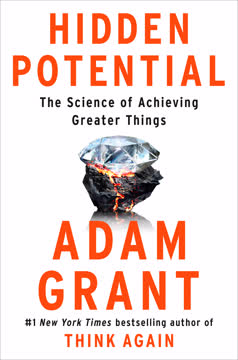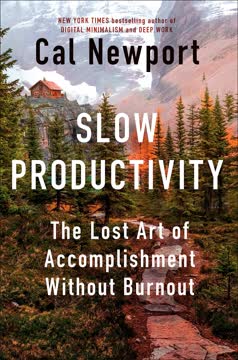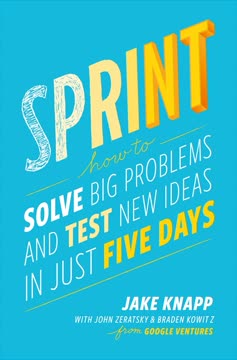Ključne točke
1. Cikel izumiteljstva: domišljija, ustvarjalnost, inovativnost, podjetništvo
Domišljija vodi k ustvarjalnosti. Ustvarjalnost vodi k inovativnosti. Inovativnost vodi k podjetništvu.
Cikel izumiteljstva je okvir, ki omogoča, da ideje spremenimo v resničnost. Sestavljen je iz štirih medsebojno povezanih faz:
- Domišljija: zamišljanje stvari, ki še ne obstajajo
- Ustvarjalnost: uporaba domišljije za reševanje izzivov
- Inovativnost: ustvarjanje edinstvenih rešitev
- Podjetništvo: širjenje idej in navdihovanje drugih
Ta cikel ni linearen, temveč iterativen, saj se vsaka faza gradi na prejšnji in se vrača na začetek. Z razumevanjem in obvladovanjem veščin, povezanih z vsako fazo, lahko posamezniki odkrijejo svoj potencial za ustvarjanje pomembnih sprememb v svetu.
2. Domišljija: aktivno sodeluj z okoljem in si predstavljaj možnosti
Vsak od nas sprejema odločitev – aktivno ali pasivno – na kateri sceni bo odigral svoje življenje.
Aktivno sodelovanje je temelj domišljije. Za razvijanje domišljije:
- Zavestno opazuj svoje okolje
- Postavljaj vprašanja in izzivaj predpostavke
- Izpostavljaj se različnim izkušnjam in pogledom
- Vadite si predstavljati alternativne prihodnosti
Z aktivnim sodelovanjem v svetu boš prepoznal več priložnosti in razširil svoj pogled na to, kaj je mogoče. Ne pozabi, scena, ki jo izbereš za svoje življenje – naj bo to lokalna skupnost ali globalni prostor – oblikuje priložnosti, ki jih vidiš in jih zasleduješ.
3. Ustvarjalnost: izkoristi motivacijo in preizkušaj rešitve
Ustvarjalnost zahteva zapleten nabor veščin, odnosov in dejanj, ki so tesno povezani z domišljijo, inovativnostjo in podjetništvom.
Motivacija poganja ustvarjalnost. Za izboljšanje ustvarjalnega reševanja problemov:
- Prepoznaj svoje notranje motivacije
- Razdeli velike cilje na obvladljive korake
- Sprejmi eksperimentiranje in hitro prototipiranje
- Uči se iz neuspehov in izboljšuj ideje
Uporabi orodja, kot je matrika strasti in zaupanja, da razumeš svoje motivacije in področja, kjer se lahko izboljšaš. Ne pozabi, ustvarjalnost ni takojšnja popolna rešitev, temveč proces raziskovanja in izpopolnjevanja.
4. Inovativnost: osredotoči se in preoblikuj izzive
Bolj radikalno spremenimo okvir, bolj edinstvene ideje ustvarimo.
Osredotočena pozornost je ključna za inovativnost. Za učinkovito inoviranje:
- Odstrani motnje in si zagotovi čas za globoko delo
- Redno pregleduj in prednostno razvrščaj svoje obveznosti
- Vadite preoblikovanje problemov z različnih zornih kotov
- Izzivaj predpostavke in išči nekonvencionalne rešitve
Inovativnost pogosto nastane, ko na znane probleme gledaš na nov način. Z razvijanjem sposobnosti intenzivnega osredotočanja in preoblikovanja izzivov povečaš svojo zmožnost ustvarjanja resnično novih idej in rešitev.
5. Podjetništvo: vztrajaj kljub oviram in navdihuj druge
Podjetništvo ni le ustanavljanje podjetij. Gre za začetek česarkoli!
Vztrajnost in navdihovanje sta ključni podjetniški lastnosti. Za razvoj podjetniških veščin:
- Postavi jasne, ambiciozne cilje in jih razdeli na izvedljive korake
- Razvij vztrajnost in odpornost za premagovanje ovir
- Nauči se pripovedovati prepričljive zgodbe, ki navdihujejo druge
- Zgradi podporno mrežo in učinkovito sodeluj
Podjetništvo pomeni uresničevanje idej in širjenje njihovega vpliva. To zahteva ne le osebno vztrajnost, temveč tudi sposobnost motiviranja in navdihovanja drugih, da se pridružijo tvoji poti.
6. Razvij podjetniški način razmišljanja za oblikovanje svoje prihodnosti
Ti si gospodar svojega cikla izumiteljstva, kjer je konec le začetek.
Podjetniški način razmišljanja ti omogoča ustvarjanje prihodnosti, ki si jo želiš. Ključni vidiki so:
- Svet vidiš kot poln priložnosti
- Sprejemaš premišljena tveganja in se učiš iz neuspehov
- Nenehno razvijaš nove veščine in znanje
- Prevzemaš odgovornost za svoje odločitve in dejanja
Z razvojem tega načina razmišljanja postaneš bolj prilagodljiv, odporen in sposoben krmariti skozi negotovost. Ne pozabi, podjetništvo ni le posel – je življenjski pristop, ki ti omogoča, da svoje ideje spremeniš v resničnost.
7. Pripovedovanje zgodb: močno orodje za navdihovanje in vplivanje
Učinkovite zgodbe vedno pustijo prostor za tistega, ki jih posluša.
Obvladaj pripovedovanje zgodb, da okrepiš svoj vpliv. Učinkovito pripovedovanje vključuje:
- Oblikovanje jasne in prepričljive zgodbe
- Uporabo strukture (npr. "hrbtenice zgodbe") za organizacijo sporočila
- Uravnoteženje čustvenega nagovora s praktičnimi rešitvami
- Pustiti prostor občinstvu za povezovanje in sodelovanje
Dobro povedana zgodba lahko navdihne druge, da se pridružijo tvoji ideji, podprejo tvoj projekt ali sprejmejo tvoje zamisli. Z izpopolnjevanjem pripovedniških veščin izboljšaš svojo sposobnost vodenja, vplivanja in ustvarjanja sprememb.
8. Uravnoteženje vztrajnosti in skrbi zase za trajnostni uspeh
Vsak dan je korak proti tvoji prihodnosti, izbire, ki jih sprejmeš danes, pa določajo priložnosti jutri.
Trajnostni uspeh zahteva uravnoteženje vztrajnosti in skrbi zase. Za ohranjanje tega ravnovesja:
- Postavi zahtevne, a dosegljive cilje
- Redno ocenjuj in obnavljaj svoje telesne in duševne vire
- Nauči se prepoznavati znake izgorelosti in ukrepaj preventivno
- Neguj podporne odnose in zdravo ravnovesje med delom in zasebnim življenjem
Uporabi metaforo jadralne ladje na oceanu za vizualizacijo svojih rezerv:
- Voda predstavlja tvojo energijo in vire
- Gozdovi pod njo simbolizirajo tvoje ranljivosti
- Ohranjanje visoke ravni vode ti pomaga gladko krmariti skozi izzive
S skrbjo zase med zasledovanjem ciljev si zagotoviš dolgoročni uspeh in izpolnitev na svoji podjetniški poti.
Zadnja posodobitev:
FAQ
What's "Creativity Rules: Get Ideas Out of Your Head and into the World" about?
- Purpose of the book: "Creativity Rules" by Tina Seelig is a guide to transforming ideas into reality by navigating the stages of imagination, creativity, innovation, and entrepreneurship.
- Framework introduction: The book introduces the Invention Cycle, a framework that outlines the process from inspiration to implementation, emphasizing the attitudes and actions required at each stage.
- Educational approach: Seelig draws on her experience teaching at Stanford University to provide practical exercises and real-world examples to help readers develop their creative and entrepreneurial skills.
- Target audience: The book is aimed at anyone looking to harness their creativity and entrepreneurial spirit, from students to professionals seeking to innovate in their fields.
Why should I read "Creativity Rules"?
- Practical guidance: The book offers actionable advice and exercises to help readers develop their creative and entrepreneurial skills, making it a practical resource for personal and professional growth.
- Inspiration from real examples: Seelig shares stories of successful innovators and entrepreneurs, providing inspiration and illustrating how the Invention Cycle can be applied in various contexts.
- Comprehensive framework: The Invention Cycle provides a structured approach to creativity and entrepreneurship, helping readers understand the process of bringing ideas to life.
- Empowerment: By focusing on attitudes and actions, the book empowers readers to take control of their creative journey and overcome obstacles to achieve their goals.
What are the key takeaways of "Creativity Rules"?
- Invention Cycle: The book outlines the Invention Cycle, which includes imagination, creativity, innovation, and entrepreneurship, each requiring specific attitudes and actions.
- Attitudes and actions: Success in creativity and entrepreneurship depends on cultivating the right attitudes (engagement, motivation, focus, persistence) and actions (envisioning, experimenting, reframing, inspiring).
- Experiential learning: Seelig emphasizes the importance of experiential learning, encouraging readers to engage in projects and exercises to reinforce the concepts discussed.
- Mindset shift: The book encourages a shift from a scarcity mindset to one of abundance, helping readers see opportunities where others see obstacles.
How does the Invention Cycle work in "Creativity Rules"?
- Four stages: The Invention Cycle consists of four stages: imagination, creativity, innovation, and entrepreneurship, each building on the previous one.
- Imagination: This stage involves engaging with the world and envisioning new possibilities, setting the foundation for creative problem-solving.
- Creativity: Creativity requires motivation and experimentation to address challenges and develop new ideas.
- Innovation and entrepreneurship: Innovation involves focusing and reframing to generate unique solutions, while entrepreneurship requires persistence and inspiring others to bring ideas to fruition.
What is the role of imagination in the Invention Cycle?
- Foundation of creativity: Imagination is the first stage of the Invention Cycle, where individuals engage with the world and envision new possibilities.
- Curiosity and engagement: Imagination requires curiosity and active engagement, allowing individuals to identify challenges and opportunities.
- Visualization techniques: The book discusses the importance of visualization in imagining successful outcomes and overcoming obstacles.
- Setting the stage: Imagination sets the stage for creativity, innovation, and entrepreneurship by providing a vision of what could be.
How does "Creativity Rules" define creativity?
- Application of imagination: Creativity is defined as applying imagination to address a challenge, resulting in ideas that are new to the individual.
- Motivation and experimentation: Creativity requires motivation to tackle challenges and experimentation to find solutions.
- Incremental vs. breakthrough: While creativity involves generating new ideas, it is distinct from innovation, which requires breakthrough solutions that are new to the world.
- Practical exercises: The book includes exercises to help readers develop their creativity through motivation and experimentation.
What is the difference between creativity and innovation in "Creativity Rules"?
- Creativity vs. innovation: Creativity involves generating new ideas that are new to the individual, while innovation requires developing breakthrough solutions that are new to the world.
- Evolutionary vs. revolutionary: Creativity is seen as evolutionary, building on existing ideas, while innovation is revolutionary, challenging assumptions and reframing problems.
- Focus and reframing: Innovation requires focus and the ability to reframe problems to generate unique solutions.
- Practical application: The book provides examples and exercises to help readers move from creativity to innovation by challenging assumptions and exploring new perspectives.
How does "Creativity Rules" address the role of motivation?
- Internal vs. external: The book discusses the importance of internal motivation, driven by personal goals, as opposed to external motivation, which relies on outside validation.
- Fuel for creativity: Motivation is essential for creativity, as it drives individuals to experiment and find solutions to challenges.
- Passion–confidence matrix: Seelig introduces a matrix to help readers assess their passion and confidence in various activities, guiding them to focus on areas with high potential.
- Personal decision: Motivation is a personal decision, and the book encourages readers to choose what motivates them and to pursue it with commitment.
What are some practical exercises in "Creativity Rules"?
- Observation exercise: Spend an hour silently observing a location to identify opportunities and challenges, enhancing engagement and imagination.
- Passion–confidence matrix: Fill out a matrix to assess activities based on passion and confidence, helping to identify areas for growth and focus.
- Pretotyping: Practice creating pretotypes, or low-fidelity prototypes, to test ideas quickly and gather feedback before investing significant resources.
- Storytelling: Use the story spine framework to craft compelling narratives, enhancing the ability to inspire others and communicate ideas effectively.
What are the best quotes from "Creativity Rules" and what do they mean?
- "Entrepreneurs do much more than imaginable with much less than seems possible." This quote captures the essence of entrepreneurship as described in the book, emphasizing the ability to achieve great things with limited resources through creativity and innovation.
- "Imagination is everything. It is the preview of life’s coming attractions." This quote by Albert Einstein, referenced in the book, highlights the importance of imagination in envisioning future possibilities and setting the stage for creativity and innovation.
- "Life is the art of drawing without an eraser." This quote by John Gardner, mentioned in the book, underscores the idea that life is about making the most of what we have and creating meaning from our experiences.
- "Meaning is not something you stumble across, like the answer to a riddle or the prize in a treasure hunt. Meaning is something you build into your life." This quote emphasizes the proactive role individuals must take in creating a meaningful life, aligning with the book's message of taking control of one's creative journey.
How does "Creativity Rules" suggest overcoming obstacles?
- Visualization of obstacles: The book suggests visualizing both the desired outcome and the obstacles that need to be overcome, helping to prepare for challenges.
- Reframing problems: By examining and challenging assumptions, readers can reframe problems to see them as opportunities rather than obstacles.
- Persistence and grit: The book emphasizes the importance of persistence and grit in overcoming obstacles, encouraging readers to push through challenges with determination.
- Support and inspiration: Inspiring others and building a supportive network can help overcome obstacles by leveraging collective resources and motivation.
How can "Creativity Rules" help in professional development?
- Structured framework: The Invention Cycle provides a structured approach to creativity and entrepreneurship, helping professionals navigate the process of bringing ideas to life.
- Skill development: The book offers practical exercises to develop skills in imagination, creativity, innovation, and entrepreneurship, enhancing professional capabilities.
- Mindset shift: By encouraging a shift from a scarcity mindset to one of abundance, the book helps professionals see opportunities and potential for growth.
- Inspiration and motivation: Real-world examples and stories of successful innovators provide inspiration and motivation for professionals to pursue their goals and overcome challenges.
Ocene
Knjiga Creativity Rules prejema mešane ocene, povprečna ocena znaša 3,66 od 5. Nekateri bralci jo dojemajo kot navdihujočo in praktično, saj pohvalijo njen okvir za ustvarjalnost in podjetništvo. Drugi pa jo kritizirajo zaradi prevelike osredotočenosti na podjetništvo namesto na splošno ustvarjalnost. Knjiga ponuja vaje in primere iz resničnega življenja, kar nekateri ocenjujejo kot koristno. Vendar pa nekateri bralci menijo, da ji primanjkuje globine ali konkretnih korakov. Na splošno se zdi, da bolj nagovarja tiste, ki jih zanimajo poslovanje in inovacije, kot pa širše ustvarjalne dejavnosti.
Similar Books

















